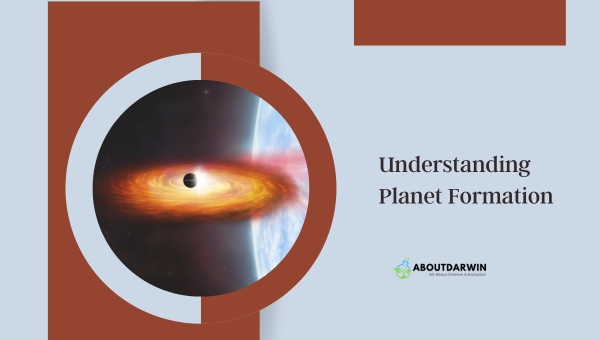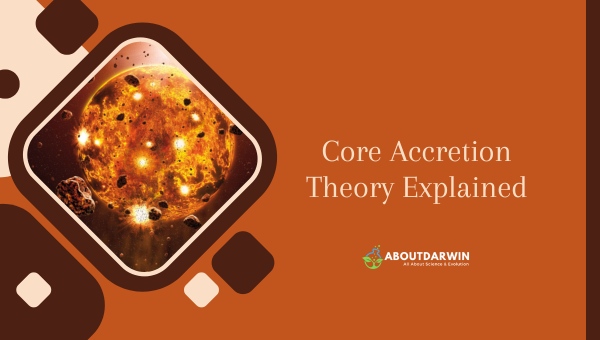Physical Address
304 North Cardinal St.
Dorchester Center, MA 02124
Unraveling the mysteries of planet formation has fascinated me for years. Planet formation and, mainly, the core accretion theory are crucial concepts to understanding the origins of our solar system and the variety of exoplanets found beyond it.
At the heart of this theory is that solid dust grains come together through mutual gravitational attraction, forming planetesimals. Gradually, these planetesimals merge, ultimately creating full-fledged planets. In this article, I’ll dive into the core accretion theory and the intricate process of planet formation that it attempts to explain.
With the aid of powerful telescopes and the burgeoning field of astrobiology, our understanding of the birth of planets continues to grow. Through this article, I hope to shed light on the core accretion theory and the marvelous complexity of planetary formation.
To truly appreciate the complexities of planet formation’s complexities, exploring the core accretion theory is essential. This theory revolves around small, solid particles that collide and stick together in a protoplanetary disk, ultimately forming larger bodies known as planetesimals.

Over time, these planetesimals accumulate more mass, eventually creating planets.
An essential factor in this process is the protoplanetary disk. It primarily consists of the following:
As a starting point, the dust and ice particles within the disk begin to clump together due to gravity and electrostatic forces. This is known as the dust growth phase. During this stage, centimeter-sized particles gradually increase to kilometer-sized planetesimals.
The following stage, the runaway growth phase, sees these planetesimals attract more mass in a shorter period. The larger the planetesimal, the stronger its gravitational force, enabling it to attract even more particles.
Eventually, we reach the oligarchic growth phase. This phase is characterized by large planetesimals dominating the protoplanetary disk, with an increased chance of collisions between themselves. These interactions lead to protoplanets that can accumulate enough gas to form a planetary atmosphere.
Here is a summary of the different growth phases in planet formation:
| Growth Phase | Description |
|---|---|
| Dust Growth | Centimeter-sized particles form. |
| Runaway Growth | Kilometer-sized planetesimals form rapidly. |
| Oligarchic Growth | Protoplanets form by collisions of large bodies. |
The core accretion theory is not without its challenges. For example, the “meter-size barrier” issue revolves around particles’ difficulty growing from centimeters to meter sizes before being dragged into the central star. Additionally, core accretion seems to have trouble explaining how gas giants like Jupiter formed as quickly as they did.
To address these issues, alternative theories have been proposed, such as the disk instability theory, which emphasizes the direct collapse of gas within the protoplanetary disk to form planets.
Despite the challenges and alternative theories, the core accretion theory remains a significant cornerstone in our understanding of planet formation. This knowledge allows us to better comprehend the origins of planets in our solar system and the countless exoplanets discovered beyond it.
Why Does the Earth Hum? Exploring the Science Behind It
Core Accretion Theory is one of the most widely accepted theories explaining planet formation. At the heart of this theory is the idea that planets form through the gradual accumulation of solid celestial fragments, such as dust and rocks.

Let’s delve into the details of this intriguing theory and explore how it helps to account for the birth of planets in our solar system.
Core Accretion Theory starts with a cloud of gas and dust in space, known as a protoplanetary disk, surrounding a young star. Over time, tiny particles within this dusty disk come together through electrostatic forces, gradually forming larger bodies. These beginnings are often called planetesimals, ranging from several meters to hundreds of kilometers in diameter.
As the planetesimals grow larger, they collide and merge, tapping into their gravitational pull. At this stage, they’re big enough to attract additional debris from the disk, leading to a snowball effect, often called runaway growth.
Once the core of an object in the protoplanetary disk reaches a critical mass, it can start capturing gas from the surrounding environment, ultimately forming a gas envelope.
The Core Accretion Theory posits two different regimes of planetary formation:
Here are some significant numbers related to the Core Accretion Theory:
| Facts | Numbers |
|---|---|
| Maximum diameter of planetesimals | Hundreds of kilometers |
| Critical mass for gas giants | 5-10 times Earth’s mass |
The Core Accretion Theory provides a compelling explanation for the formation of terrestrial and gas giant planets. This gradual growth, collision, and accumulation occur over millions of years, resulting in the diverse range of celestial bodies we observe within our solar system today.
However, it’s worth noting that other theories, such as the Disk Instability Theory, offer alternative perspectives on planet formation. Even though our understanding has significantly advanced in recent years, there’s still plenty to learn about the fascinating origins of the cosmic neighbors we find throughout the universe.
Top 10 Fascinating Facts About Uranus
Having delved into the fascinating world of planet formation and the core accretion theory, it’s clear that there’s still much to learn and discover. Our understanding of how planets form has evolved over the years, and the core accretion model has gained significant support from both observational evidence and computer simulations. Some of the critical aspects of this theory include:
Though widely accepted, the core accretion theory still faces challenges and uncertainties. Issues such as the growth barrier in the runaway phase and the time required for core formation are yet to be wholly resolved. However, ongoing research and technological advancements provide insights into planet formation’s mysteries.
Here’s what we’ve covered:
The core accretion theory provides a solid foundation for understanding planet formation, but there’s always room for improvement. As scientists further refine their models and gather additional data, we’ll continue to expand our knowledge of the cosmos and discover new wonders that may reshape our understanding of the universe.
As a keen observer of the scientific world, I look forward to future discoveries and advancements. So stay tuned, as exploring planet formation and the intricacies of core accretion promises to remain an intriguing and enlightening experience.